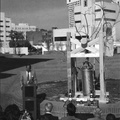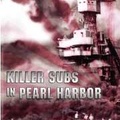The dictionary in question is the New Kenkyusha Japanese-English Dictionary, published in Tokyo in 1931. This was a gift from Masaru Miyauchi, my cousin, in Fukuoka Prefecture on my mother’s side, when I graduated from Maryknoll School as an eighth grader in 1932. The dictionary, its binding scotch-taped around the spine now, remains in good use and standing to this day.
During my high school days, Mom kept encouraging me to write letters to my cousin in Nihongo and Masaru-san responded in English. Our letters were truly simple. We were writing about the weather, our high school, and weekend activities.
When the disaster of Pearl Harbor struck December 7, 1941, many Issei were discarding and burning Japanese language-reading matter as well as family heirlooms with a Japanese-Japanese affinity. Perhaps Japanese-English dictionaries (at least mine) were not regarded as such.
When the Army Military Intelligence Service (Japanese) Language School opened on November 1, 1941, at the Presidio of Monterey, the school had to reprint the Kenkyusha Japanese-English Dictionary, as well as Japanese government textbooks for use by Nisei G.I.s enrolled in what was then a top-secret operation.
In Washington, the Army had requested U.S. military attaché in Tokyo to directly ship as many dictionaries available to the school. They made it as far as Manila when the war broke out. What the students used were reprints on heavier stock, not the traditional thin and durable India paper.
In October 1967, I joined the National JACL (Japanese American Citizens League) goodwill tour of Japan to visit with Foreign Minister Takeo Miki at his Foreign Office and U.S. Ambassador U. Alexis Johnson at the American Embassy. (Inside the embassy compound, the cars were driven on the right—not left—side of the road.)
Once we landed in Japan, our group of 99 was accommodated by three buses. For the record: Mas Satow #1, Pat & Lily Okura #2, and Dr. David Miura #3 were designated bus leaders. Bus 3 members were chiefly from Southern California. Some of us swapped stories with our Japan Travel Bureau guide.
For the third week, it was time to finally meet Masaru-san and his family at his home in Yoshiki, a suburb of Kitakyushu. He was a school teacher who had served in the Japanese Navy during the war.
We drove out to where Mom attended primary and secondary school, visited the small cemetery where Mom’s ancestors lie, the temples, shrines and the fields of Ashiya where my dad grew up, then fenced in as an American air-base since the Korean Conflict.
My mom had already written to him that I was going to tour Japan and visit during the third week of the JACL tour, open for family visits. She felt my Japanese conversational skills were lacking and had real concerns about the meeting with my cousins.
But after two weeks touring Japan and being immersed in Nihongo daily, I managed to comfortably chat with him and his children. My mom later received a letter indicating the visit turned out to be most welcome and that my Nihongo was more than adequate.
What pops up in my mind now was the overnight stay at the hotel by the railroad station at Kokura to meet the Miyauchis. The Kokura Castle across the station was rebuilt because it had been demolished by American bombs during the war. Kokura was a steel manufacturing center.
Beside the exhibit of historic artifacts, one message on display is still indelible—that Kokura was the first target for the second atomic bomb that was dropped on Japan. Due to the overcast sky by heavy clouds that morning (August 9, 1945), the American bomber with “Fat Man” (a plutonium bomb) proceeded to....
....“[A] secondary target and dropped the atomic bomb at 10:58 a.m. local time from 28,900 feet (exploding) two miles wide of the target because of the bombadier’s reliance on the radar until, when the clouds suddenly broke at the last minute, he returned to visual aiming. Because Nagasaki lay among hills surrounding the bay, whereas Hiroshima sat on a plain, parts of the city of 200,000 were sheltered from the blast. Still, at least 35,000 persons were killed. Afterwards 40,000 more died from radiation.”
These quotes come from Oxford Companion to American Military History (1999), p. 315. Thus, the Miyauchi’s and thousands living around Kokura were spared.
My family story doesn’t end here.
* * * * *
Miyauchi-san’s son, Kenichi (he was 10 when I visited the family), working with a fish import-export firm in Fukuoka with occasional business trips to America (San Francisco in particular), would telephone my mother in Los Angeles but was unable to visit her. But thanks to the computer, we have re-connected via e-mail and we have undertaken to refine our respective family histories.
* This article was originally published in the Nanka Nikkei Voices: The Japanese American Family (Volume IV) in 2010. It may not be reprinted or copied or quoted without permission from Japanese American Historical Society of Southern California.
Copies from Iku Kiriyama’s personal collection of all four issues (#1: Resettlement Years; #2: Turning Points; #3: Little Tokyo; #4: The Japanese American Family) are available for purchase. ($20 each + postage) Contact Iku at goiku@sbcglobal.net if interested.
© 2010 Japanese American Historical Society of Southern California






